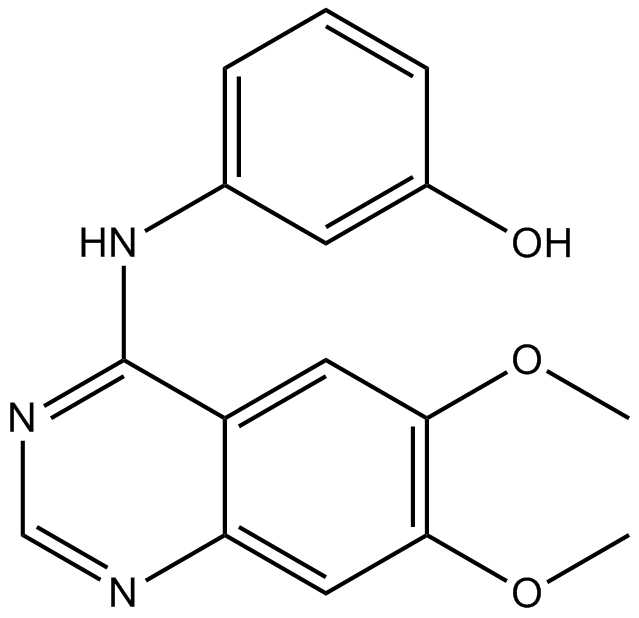WHI-P180 (Synonyms: Janex 3) |
| رقم الكتالوجGC16000 |
WHI-P180 (Janex 3) هو مثبط متعدد كينيز ؛ يثبط RET و KDR و EGFR مع IC50s من 5 نانومتر و 66 نانومتر و 4 ميكرومتر ، على التوالي
Products are for research use only. Not for human use. We do not sell to patients.

Cas No.: 211555-08-7
Sample solution is provided at 25 µL, 10mM.
WHI-P180 (Janex 3) is a multi-kinase inhibitor; inhibits RET, KDR and EGFR with IC50s of 5 nM, 66 nM and 4 μM, respectively.
WHI-P180 is also an active inhibitor of IgE-mediated mast cell responses. The elimination half-life of WHI-P180 in CD-1 mice (BALB/c mice) following i.v., i.p., or p.o. administration is less than 10 min. Systemic clearance of WHI-P180 is 6742 mL/h/kg in CD-I mice and 8188 mL/h/kg in BALB/c mice. Notably, WHI-P180, when administered in two consecutive nontoxic i.p. bolus doses of 25 mg/kg, inhibits IgE/antigen-induced vascular hyperpermeability in a well-characterized murine model of passive cutaneous anaphylaxis[3].
References:
[1]. Newton R, et al. The discovery of 2-substituted phenol quinazolines as potent RET kinase inhibitors with improved KDR selectivity. Eur J Med Chem. 2016 Apr 13;112:20-32.
[2]. Ghosh S, et al. 4-[3-Bromo-4-hydroxyphenyl)amino]-6,7-dimethoxyquinazolin-1-ium chloride methanol solvateand 4-[(3-hydroxyphenyl)amino]-6,7-dimethoxy-1-quinazolinium chloride. Acta Crystallogr C. 2001 Jan;57(Pt 1):76-8.
[3]. Chen CL, et al. Pharmacokinetics and biologic activity of the novel mast cell inhibitor, 4-(3-hydroxyphenyl)-amino-6,7-dimethoxyquinazoline in mice. Pharm Res. 1999 Jan;16(1):117-22.
Average Rating: 5 (Based on Reviews and 19 reference(s) in Google Scholar.)
GLPBIO products are for RESEARCH USE ONLY. Please make sure your review or question is research based.
Required fields are marked with *




















